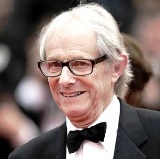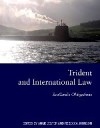By Pete Roche
Introduction
When the Queen opened Britain’s first nuclear reactor, Calder Hall (at Sellafield), in 1956 its primary role was to produce plutonium for British bombs, demonstrating from the start the inextricable link between civil and military nuclear power. (1)
The International Atomic Energy Agency (IAEA) and the Non-proliferation Treaty (NPT) embody a fundamental contradiction – both seek to promote the development of ‘peaceful’ nuclear power at the same time as trying to stop the spread of nuclear weapons. Since the NPT came into force in 1970, Israel, India, Pakistan and North Korea have all obtained nuclear weapons and Iran, Iraq and Libya have confirmed the connection between nuclear weapons and power – illustrating that the current non-proliferation regime is doomed to fail.
Fissile material
Manufacturing a nuclear bomb requires fissile material - either uranium-235 or plutonium-239. The problem is that most nuclear reactors use uranium as a fuel and produce plutonium during operation.
In natural uranium only around 0.7 per cent consists of the ‘fissile’ uranium-235 which can support a chain reaction. The rest is uranium-238. Most modern reactors need the proportion of uranium-235 in the fuel to be increased to around 2 or 3 per cent – a process known as enrichment. A nuclear bomb requires the proportion of uranium-235 to be around 90 per cent. Anyone with uranium enrichment technology for manufacturing nuclear fuel simply needs to increase the enrichment level to manufacture a nuclear weapon. A bomb only needs around 20 kilograms of Highly Enriched Uranium (HEU).
When a nuclear reactor is operating, the non-fissile uranium-238 in the fuel is transmuted into plutonium-239. Given the right equipment to chemically separate out this plutonium from the waste, a reactor operator can also make a nuclear bomb. In a nuclear reactor, other plutonium isotopes will be produced as well. To make an efficient and predictable nuclear weapon you would want to maximise the proportion of plutonium-239. But any grade of plutonium can be used to make nuclear weapons, if you are not too worried about yield and efficiency. (2)
Proliferation – the uranium route
So the first major challenge to nuclear proliferation controls is the spread of uranium enrichment technology. Nothing better illustrates how, so-called, peaceful nuclear technology can be used for military purposes than the activities of the Khan network. Abdul Qaadeer Khan was able to build a global nuclear information network and business which had access to supposedly secret uranium enrichment technology. Using a mixture of legal and illegal transactions involving businesses all over the world, ultracentrifuge enrichment technology was exported to Libya, North Korea and Iran. (3) Despite being a signatory to the NPT, Iran established a uranium enrichment programme without informing the IAEA.
Proliferation – the plutonium route
Another major challenge is the impossibility of adequately safeguarding a plutonium separation or reprocessing plant. Commercial reprocessing plants handle large amounts of plutonium – typically about 7 or 8 tonnes of plutonium a year. A nuclear weapon could be made with as little as 3 or 4 kilograms of reactor-grade plutonium. To ensure the timely detection of the diversion of such a small amount of plutonium in a plant where so much plutonium is handled requires much more precision than is achievable with today’s technology, so the IAEA has an impossible task. (4)
“Proliferation Resistant” Reactors – a misconception
It is a misconception that conventional nuclear reactors are somehow proliferation resistant, if a nuclear operator doesn’t have access to uranium enrichment or reprocessing technology. Separating plutonium from spent nuclear waste fuel does not require a large industrial-scale reprocessing facility. A quick and simply designed plutonium separation facility could be in operation four to six months after the start of construction. (5)
Spread of civilian technology
Although the Fukushima Daiichi nuclear accident has affected nuclear power in some countries, a new report by the OECD Nuclear Energy Agency (NEA) and the IAEA estimates that world nuclear electricity generating capacity will grow from 375 GW (at the end of 2010) to between 540 GW and 746 GW by 2035. (6)
A global expansion of nuclear power will require a proportional expansion of uranium enrichment capacity. Brice Smith looks at a scenario which involves nuclear power capacity expanding to 1000 GW by 2050. If just one percent of the enrichment capacity required to power a nuclear programme this size were diverted to weapons, this would be enough to make between 175 and 310 bombs every year. (7)
Nuclear expansion would probably also lead to an expansion of reprocessing too. The scenario looked at by Brice Smith would require 17 new plants the size of the THORP reprocessing plant at Sellafield. 155.3 tonnes of plutonium would be separated annually. If just one percent of this plutonium were diverted it would be enough to make 194 bombs every year. (8)
The spread of civil nuclear reactors risks the possibility of multiple mini cold-wars around the globe. (9) About 60 countries were reported to have approached the IAEA in 2012, expressing an interest in starting nuclear programmes. (10) Thirteen countries in the greater Middle East expressed an interest in 2008, according to the International Institute for Strategic Studies (IISS). Some of these countries appear to be moving down the nuclear path in reaction to the Iran’s determined pursuit of uranium enrichment. (11) Kuwait (12) and Bahrain (13) both announced they were abandoning plans for new reactors in 2012. But other countries such as Saudi Arabia and the United Arab Emirates are continuing. The IAEA expects Vietnam, Bangladesh, United Arab Emirates, Turkey and Belarus to start building their first nuclear power plants in 2012, with Saudi Arabia and Jordan following next year. (14)
Conclusions
The history of the IAEA and the NPT demonstrate that peaceful nuclear energy is a myth. Promoting ‘peaceful’ nuclear power has accelerated nuclear weapons proliferation. The United Nations needs a body leading the way in tackling the twin threats of climate change and nuclear proliferation, promoting a nuclear phase out and sustainable energy which can foster world peace rather than threatening it.
Bibliography
(1) Durie, S and Edwards, R (1982) Fuelling the Nuclear Arms Race, Pluto Press.
(2) U.S. Department of Energy, Nonproliferation and Arms control Assessment of Weapons-Usable Fissile Material Storage and Excess Plutonium Disposition Alternatives, (1997), 37, excerpted in http://www.ccnr.org/plute.html
(3) Joop Boer, Henk van der Keur, Karel Koster, Frank Slijper, A.Q. Khan, Urenco and the proliferation of nuclear weapons technology: The symbiotic relation between nuclear energy and nuclear weapons,. Greenpeace International May 2004.
http://www.greenpeace.org/international/press/reports/a-q-khan-urenco-and-the-prol
(4) Miller, M. M., Are IAEA Safeguards on Plutonium Bulk-Handling Facilities Effective?, Nuclear Control Institute, Washington, DC., August 1990. http://www.nci.org/k-m/mmsgrds.htm
and Leventhal, P., IAEA Safeguards Shortcomings: A Critique, Nuclear Control Institute, Washington, DC., September 12, 1994. http://www.nci.org/p/plsgrds.htm
(5) The end of KEDO: Why supplying a nuclear reactor to North Korea would have increased
proliferation risks in East Asia, by Shaun Burnie and Tom Clements, Greenpeace International, May
2006. http://www.greenpeace.org/international/en/publications/reports/the-end-of-kedo/
And: Gilinsky, V., Miller, M.,and Hubbard, H., A fresh examination of the proliferation dangers of Light Water Reactors, October 22nd 2004, Nonproliferation Policy Education Center, Washington.
(6) “Global Uranium Supply Ensured for Long Term, New Report Shows”, IAEA Press Release 26th July 2012 http://www.iaea.org/newscenter/pressreleases/2012/prn201219.html
(7) “Insurmountable Risks” by Brice Smith, IEER, 2006. (Section 3.1)
http://www.no2nuclearpower.org.uk/reviews/review01.php
(8) ibid section 3.2
(9) “Fast forward 10 years… and there are cold wars everywhere” by Niall Ferguson, Sunday Telegraph 14th May 2006 http://www.telegraph.co.uk/comment/personal-view/3624969/Fast-forward-10-years-and-there-are-cold-wars-everywhere.html
(10) “New Countries go Nuclear Despite Fukushima,” Nuclear Power Daily 24th Feb 2012 http://www.nuclearpowerdaily.com/reports/New_countries_go_nuclear_despite_Fukushima_UN_official_999.html
(11) Nuclear Programmes in the Middle East: In the Shadow of Iran, IISS, May 2008.
(12) “Kuwait scraps nuclear power in light of 3/11”, Japan Times 23rd Feb 2012 http://www.telegraph.co.uk/comment/columnists/concoughlin/3558653/Its-nuclear-power-not-oil-that-worries-the-Middle-East.html
(13) “Bahrain scraps nuclear power plan”, Modern Power Systems, 26th Feb 2012 http://www.modernpowersystems.com/story.asp?sectionCode=131&storyCode=2061836
(14) “New Countries go Nuclear Despite Fukushima,” Nuclear Power Daily 24th Feb 2012 http://www.nuclearpowerdaily.com/reports/New_countries_go_nuclear_despite_Fukushima_UN_official_999.html
Pete Roche
August 2012

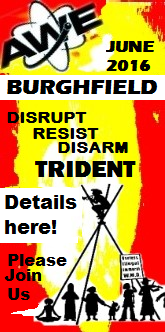
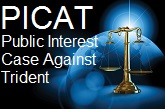
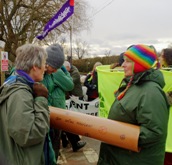








 Nuclear weapons crime in the UK has been reported to Thames Valley Police.
Nuclear weapons crime in the UK has been reported to Thames Valley Police.


